BIS Approves Ather-Developed Connector As New Charging Standard For Light EVs In India

- IS17017 is the world’s first standard that combines AC and DC charging for small EVs.
- Result of collaboration between ARAI, Niti Aayog, DST and EV manufacturers.
- Expected to result in proliferation of chargers and open up the path for interoperability.
In what is a landmark moment for India’s electric two-wheeler and three-wheeler industry, the Bureau of Indian Standards (BIS) has recognised the country’s first combined charging standard for light electric vehicles (LEVs). The new standard, dubbed IS17017 (Part 2 / Sec 7): 2023, is based on Ather Energy’s charging connector, and is the world’s first charging standard that combines AC and DC charging for small EVs, such as electric scooters, motorcycles, three-wheelers and quadricycles. This standard has resulted from a collaboration between the BIS, government think tank Niti Aayog, Department of Science and Technology, Automotive Research Association of India and electric vehicle manufacturers.
So far, the lack of a concrete charging standard for electric two- and three-wheelers in India has meant most manufacturers have adopted proprietary standards, which discourages the prospect of interoperability. Many electric three-wheeler players chose to go with outdated charging standards, mirroring what was used in the Chinese market. While there is an established standard for electric four-wheelers (CCS2), it’s not suitable to incorporate into smaller EVs, because of its size and cost implications.
In the absence of an accepted standard, most EV players adopted proprietary connector designs, hurting the prospects of interoperability.
The IS17017 charging standard is said to solve for both use cases, as this single connector can provide up to 7.7 kW of AC charging, and up to 12 kW of DC fast-charging. Not only will this provide flexibility for owners of electric two-wheelers and three-wheelers, but also make life easier, as users of such vehicles may not have to lug around a heavy portable charger with them at all times.
"Since more than 75 per cent of new vehicles sold in India are either two or three-wheelers, we created a standard that impacts the biggest chunk of the vehicle market. Several government bodies and private sector OEMs came together to make this happen. This is a unique global innovation that has been indigenously developed by BIS. It facilitates both AC (slow) and DC (fast) charging from the same service point/station and has enormous potential for adoption and proliferation of electric mobility", said BVR Subrahmanyam, CEO of Niti Aayog.
“CCS2 moment for electric two-wheelers”
It’s a defining development for India’s electric vehicle industry, which, so far, has had to find ways to allay customer concerns relating to the availability – or the lack thereof – of charging infrastructure. It’s also a move that will make product development simpler for vehicle manufacturers, who won’t have to come up with vastly different charging systems for future models.
“Think of this as the CCS2 moment for India’s electric two-wheeler industry. It uncomplicates future product strategy as well. When a manufacturer has to build a two-wheeler with a bigger battery, or produce a motorcycle (which naturally will have different energy and packaging needs), they will no longer have to design different systems for each model, because they know this new standard will take care of varying charging needs”, an industry source told carandbike, requesting anonymity.
This is also expected to have another positive outcome in the form of enhanced availability of public charging infrastructure.
“Companies that are invested in setting up public charging infrastructure have so far had clarity on what they need to do for electric cars, but refrained from dipping their toes into the two-wheeler side of things. With IS17017 now defined, more charging firms will set up these chargers, leading to wider availability and a better customer experience overall”, added the aforementioned source.
Ather Energy currently has over 1,500 ‘Grid’ fast-charging points across India.
Ather Energy, which opened the IP on this charging connector back in 2021, currently has over 1,500 ‘Grid’ fast-charging points functioning across India. India’s leading two-wheeler manufacturer Hero MotoCorp – which holds a significant stake in Ather – has also chosen this connector design for its fast-charging network and its maiden product, the Vida V1. Combined, Hero and Ather have the largest two-wheeler public charging network in the country.
With IS17017 now approved as a standard, it will likely be adopted by several other electric two- and three-wheeler manufacturers in the time to come. And while true interoperability may still be some time away, the formal recognition of the standard is the first step in that direction.
“The end goal of this standard is to let electric two-wheeler buyers know that they won’t have to worry about where to charge their vehicle. Over one or two product lifecycles, interoperability will become a reality – powered by technology that was designed, developed and honed in India. It’s also a vote of confidence, because this technology is good enough to be – and I’m sure it will be – deployed across the world, where LEV standards are still to be defined”, said the aforementioned source.
Latest News
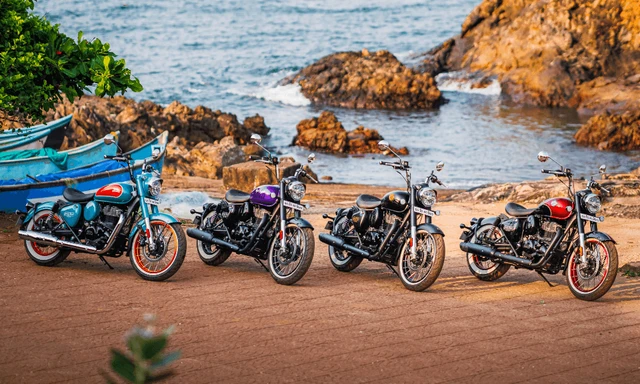 car&bike Team | Jan 12, 2026Updated Royal Enfield Goan Classic 350 Launched: Gets Slip And Assist ClutchThe updated Goan Classic also gets a faster Type-C charging port.1 min read
car&bike Team | Jan 12, 2026Updated Royal Enfield Goan Classic 350 Launched: Gets Slip And Assist ClutchThe updated Goan Classic also gets a faster Type-C charging port.1 min read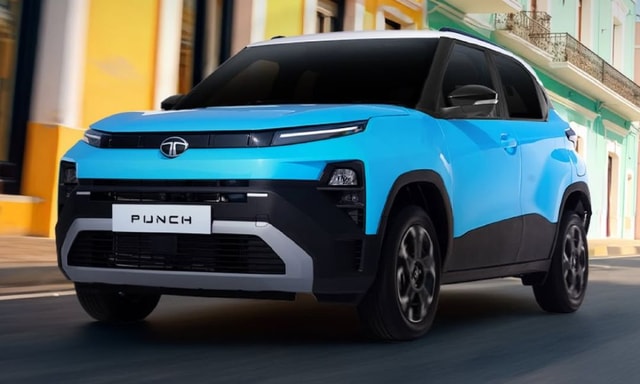 Jaiveer Mehra | Jan 12, 2026Tata Punch Facelift Launch Tomorrow: What To ExpectUpdated internal combustion Punch gets a design in line with its larger siblings as well as a new engine option.3 mins read
Jaiveer Mehra | Jan 12, 2026Tata Punch Facelift Launch Tomorrow: What To ExpectUpdated internal combustion Punch gets a design in line with its larger siblings as well as a new engine option.3 mins read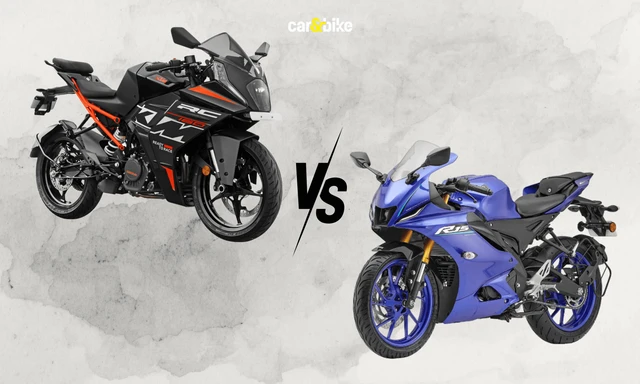 Jafar Rizvi | Jan 9, 2026KTM RC 160 vs Yamaha R15: Specifications, Features, Prices ComparedKTM’s new RC 160 goes head-to-head with the Yamaha R15 in the entry-level sportbike category. Here is how the two fare on paper.1 min read
Jafar Rizvi | Jan 9, 2026KTM RC 160 vs Yamaha R15: Specifications, Features, Prices ComparedKTM’s new RC 160 goes head-to-head with the Yamaha R15 in the entry-level sportbike category. Here is how the two fare on paper.1 min read Amaan Ahmed | Jan 9, 2026Suzuki E-Access Launched At Rs 1.88 Lakh; LFP Battery Promises 95 KM RangeOriginally confirmed for a June 2025 launch, Suzuki's first electric two-wheeler for India has finally arrived almost a year after making its global debut at Auto Expo 2025.3 mins read
Amaan Ahmed | Jan 9, 2026Suzuki E-Access Launched At Rs 1.88 Lakh; LFP Battery Promises 95 KM RangeOriginally confirmed for a June 2025 launch, Suzuki's first electric two-wheeler for India has finally arrived almost a year after making its global debut at Auto Expo 2025.3 mins read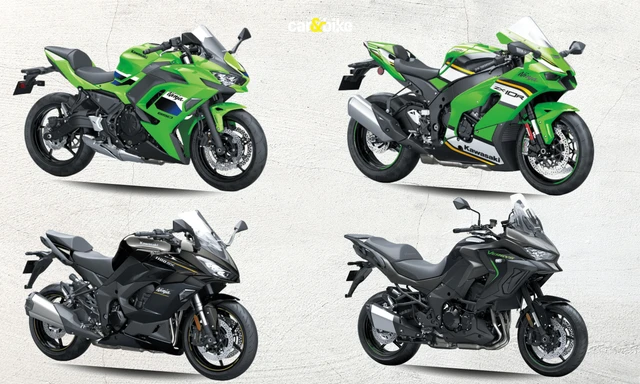 car&bike Team | Jan 9, 2026Kawasaki Ninja, Versys Models Offered With Discounts Of Up To Rs 2.50 LakhThe Ninja ZX-10R is offered with maximum benefits, followed by the Ninja 1100SX and Versys 1100.1 min read
car&bike Team | Jan 9, 2026Kawasaki Ninja, Versys Models Offered With Discounts Of Up To Rs 2.50 LakhThe Ninja ZX-10R is offered with maximum benefits, followed by the Ninja 1100SX and Versys 1100.1 min read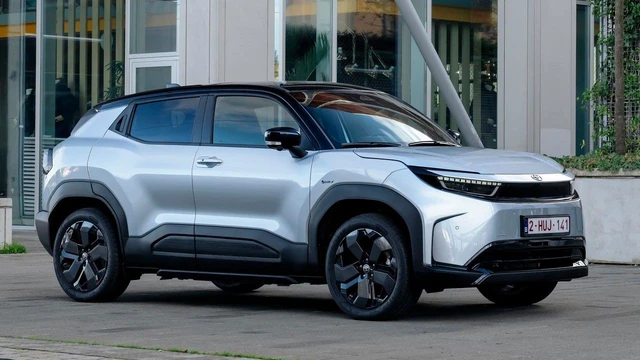 Bilal Firfiray | Jan 9, 2026Toyota Urban Cruiser EV: What To ExpectToyota will be introducing an all-electric vehicle for the first time in India. It is the Toyota-badged version of the soon-to-be-launched Maruti Suzuki e-Vitara, and here’s everything we expect from it.1 min read
Bilal Firfiray | Jan 9, 2026Toyota Urban Cruiser EV: What To ExpectToyota will be introducing an all-electric vehicle for the first time in India. It is the Toyota-badged version of the soon-to-be-launched Maruti Suzuki e-Vitara, and here’s everything we expect from it.1 min read
 Bilal Firfiray | Jan 9, 2026Toyota Urban Cruiser Hyryder: 10,000 km Long-Term ReviewAfter spending over three months and 10,000 km with the Toyota Urban Cruiser Hyryder Hybrid, we were impressed by its real-world mileage, seamless hybrid, practical comfort, and Toyota reliability. Is it the best C-SUV then?5 mins read
Bilal Firfiray | Jan 9, 2026Toyota Urban Cruiser Hyryder: 10,000 km Long-Term ReviewAfter spending over three months and 10,000 km with the Toyota Urban Cruiser Hyryder Hybrid, we were impressed by its real-world mileage, seamless hybrid, practical comfort, and Toyota reliability. Is it the best C-SUV then?5 mins read Seshan Vijayraghvan | Jan 8, 20262026 Mahindra XUV 7XO Review: Big On Tech, Bigger On ComfortThe new Mahindra XUV 7XO is flashier, feature packed, and comes with more advanced tech. But are the changes just incremental or actually substantial?1 min read
Seshan Vijayraghvan | Jan 8, 20262026 Mahindra XUV 7XO Review: Big On Tech, Bigger On ComfortThe new Mahindra XUV 7XO is flashier, feature packed, and comes with more advanced tech. But are the changes just incremental or actually substantial?1 min read Preetam Bora | Jan 10, 2026Simple One Gen 2 First Ride Review: 265 km Claimed Range!The Gen 2 model of Simple Energy’s first electric scooter gets a fair few updates, including new features, tech, more range and lighter weight. We spent a couple of hours with the Simple One Gen 2 to find out if it manages to impress.6 mins read
Preetam Bora | Jan 10, 2026Simple One Gen 2 First Ride Review: 265 km Claimed Range!The Gen 2 model of Simple Energy’s first electric scooter gets a fair few updates, including new features, tech, more range and lighter weight. We spent a couple of hours with the Simple One Gen 2 to find out if it manages to impress.6 mins read Amaan Ahmed | Jan 3, 2026VLF Mobster 135 300 KM Review: Fun But FlawedA 125 cc scooter with Italian design and Chinese genes is a rare combination, and while some may be tempted to dismiss it because of its origins, the VLF Mobster shows 125s can also be exciting – but not without compromises.11 mins read
Amaan Ahmed | Jan 3, 2026VLF Mobster 135 300 KM Review: Fun But FlawedA 125 cc scooter with Italian design and Chinese genes is a rare combination, and while some may be tempted to dismiss it because of its origins, the VLF Mobster shows 125s can also be exciting – but not without compromises.11 mins read Preetam Bora | Dec 30, 2025TVS Orbiter Review: Real-World Performance and Range TestedThe TVS Orbiter is a promising electric scooter promising decent range, practicality and pricing. But is there any reason to avoid it? We spent a few days getting to know it better.9 mins read
Preetam Bora | Dec 30, 2025TVS Orbiter Review: Real-World Performance and Range TestedThe TVS Orbiter is a promising electric scooter promising decent range, practicality and pricing. But is there any reason to avoid it? We spent a few days getting to know it better.9 mins read






















































































































